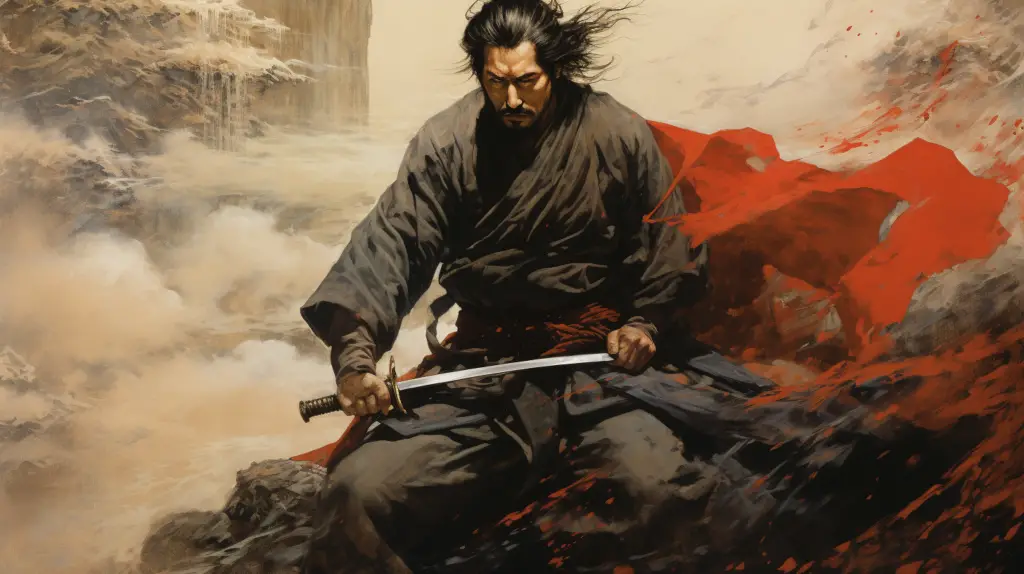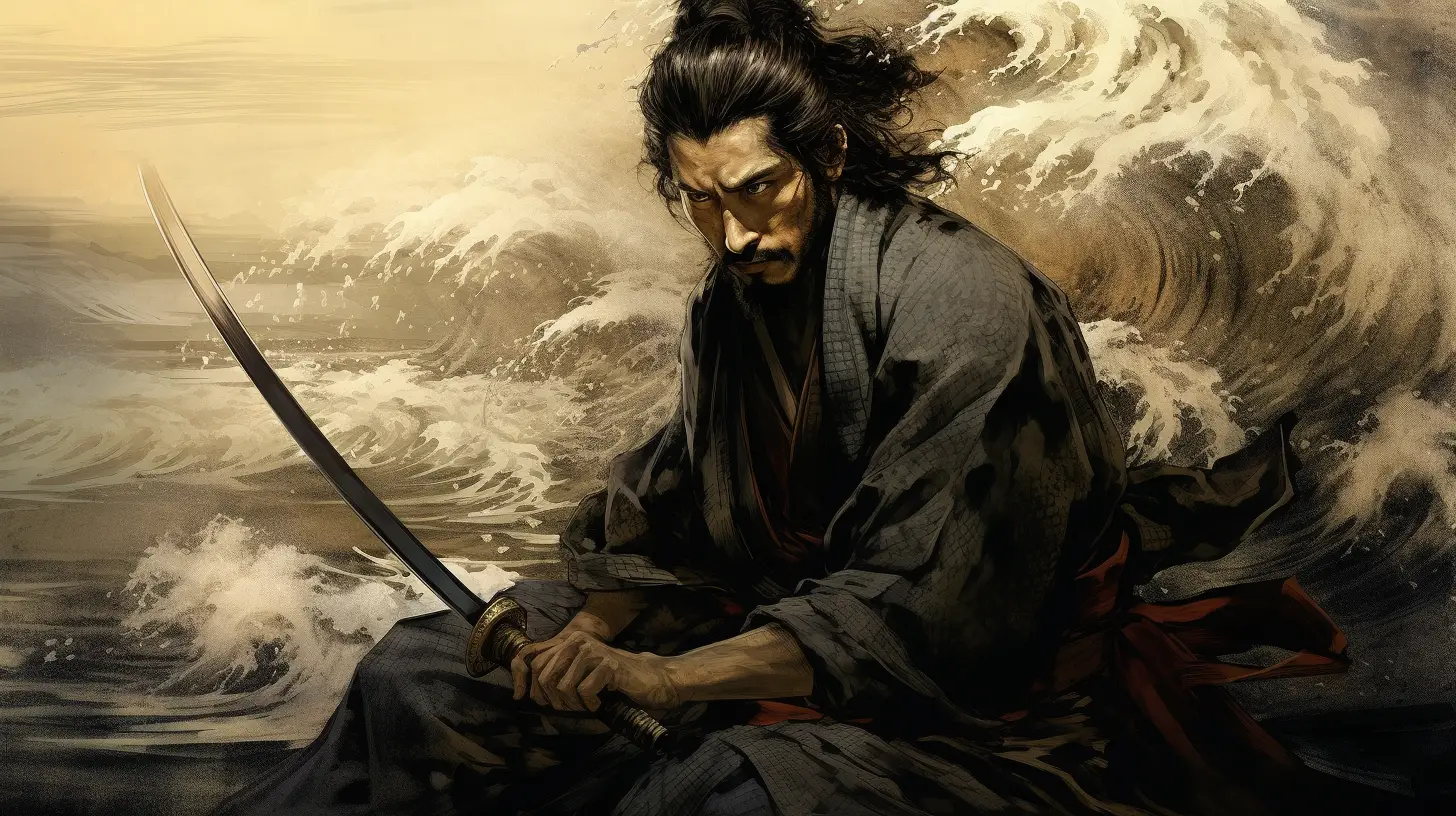Miyamoto Musashi, one of Japan’s most revered swordsmen, left an indelible mark on the samurai legacy. Famous not only for his unbeaten record in personal combat but also for his philosophical treatise on martial strategy, “The Book of Five Rings,” Musashi is often associated with a unique and innovative approach to swordsmanship known as Niten Ichi-ryu, or “the school of the strategy of two heavens as one.”
Niten Ichi-ryu: A Unique Approach
Niten Ichi-ryu is a style of swordsmanship that utilizes two swords simultaneously—the long sword, or katana, and the shorter companion sword, or wakizashi. This two sword style was a radical departure from the traditional kenjutsu techniques of the time, which typically focused on the mastery of the single long sword.
The two-sword technique offered a distinct strategic advantage, as it facilitated simultaneous offense and defense, disrupted opponents’ rhythm, and could potentially engage multiple adversaries effectively. This method reflected Musashi’s pragmatic approach to combat, focusing not on the stylistic flourish or classical forms, but on the efficiency and effectiveness of movement.
Strategic Dexterity
The two-sword style of Niten Ichi-ryu requires an advanced degree of physical coordination and spatial awareness. The wielder must effectively control the rhythm, speed, and distance of two different weapons, thereby creating a broad range of potential attacks and defenses that can confuse and overwhelm an opponent.
In Musashi’s philosophy, the primary purpose of wielding two swords was not to attack twice as much but to control the battlefield. One sword typically serves to control or disrupt the enemy’s weapon while the other attacks, a principle that is extended to various strategic elements such as positioning, timing, and rhythm.
READ MORE: Miyamoto Musashi’s Real Sword: The Blade of a Legend
Deep Philosophy
Niten Ichi-ryu was not merely a physical technique for Musashi; it was an embodiment of his deep-seated philosophies. He viewed the path of the sword not just as a means of martial proficiency, but also as a way to understand and attain a deeper understanding of life itself.
In “The Book of Five Rings,” Musashi emphasizes a concept known as “Heiho” or strategy, a principle that underscores the adaptable and fluid nature of his sword style. For Musashi, mastering strategy meant understanding the broader patterns and rhythms of existence, from the clash of swords to the ebb and flow of daily life.
READ MORE: The Legendary Katana of Miyamoto Musashi: A Story of Skill and Spirit
Legacy and Influence
Today, the legacy of Miyamoto Musashi’s sword style lives on in the Niten Ichi-ryu schools, maintaining his unique approach to combat. However, the reach of Musashi’s teachings extends far beyond these schools.
His philosophy has found resonance across different fields beyond martial arts, such as business and leadership, offering valuable insights into strategy, decision-making, and personal growth. The spirit of Niten Ichi-ryu—its focus on adaptability, balance, and deep understanding—remains a testament to Musashi’s enduring wisdom.
READ MORE: Main Characters in ‘Musashi – Book 1: The Way of the Samurai’
Conclusion
Miyamoto Musashi’s sword style, the Niten Ichi-ryu, stands as a distinct manifestation of the samurai’s strategic mastery and deep philosophical insight. A radical departure from conventional swordsmanship, it encompasses the essence of Musashi’s martial artistry and timeless wisdom, reminding us that in the heart of combat lies a path to understanding the world and oneself.



